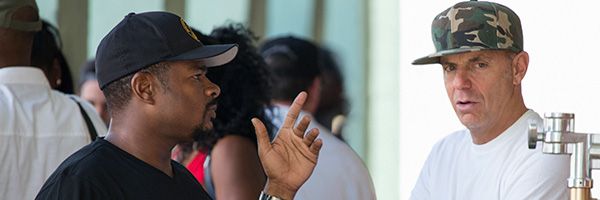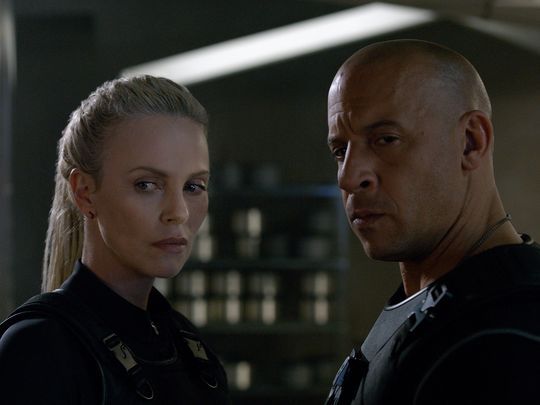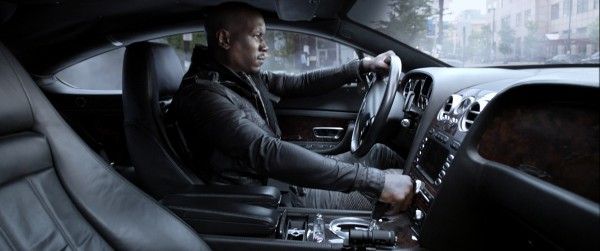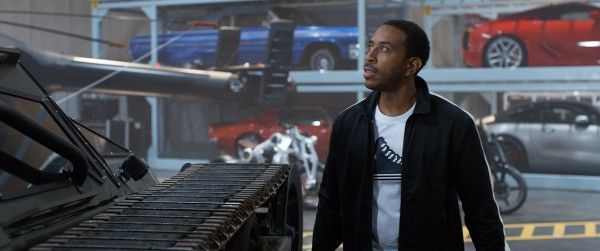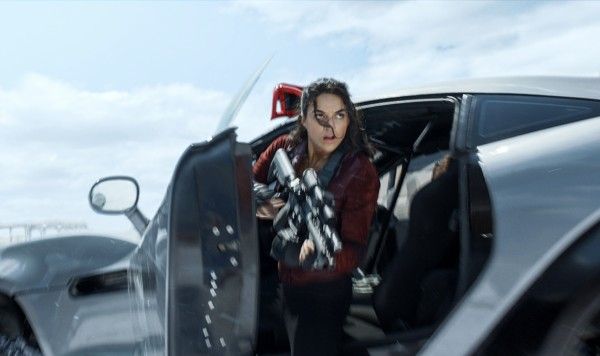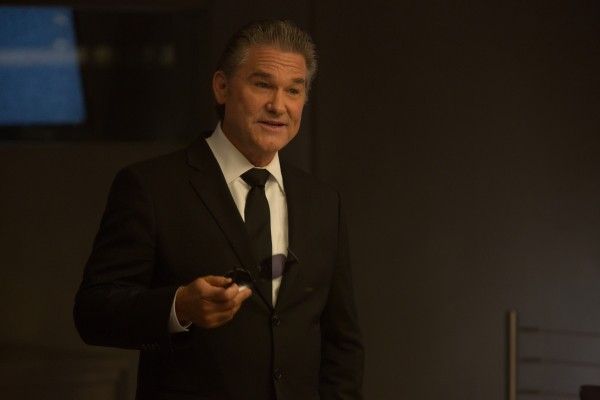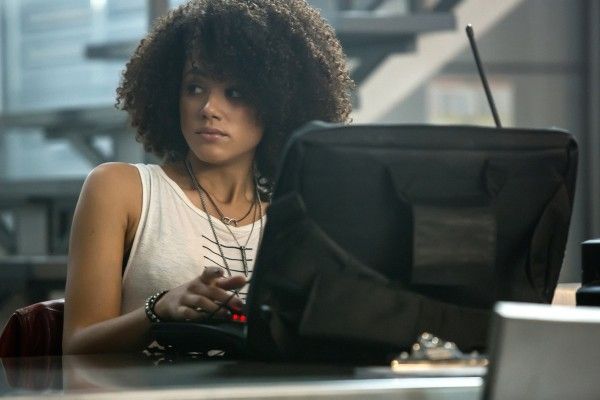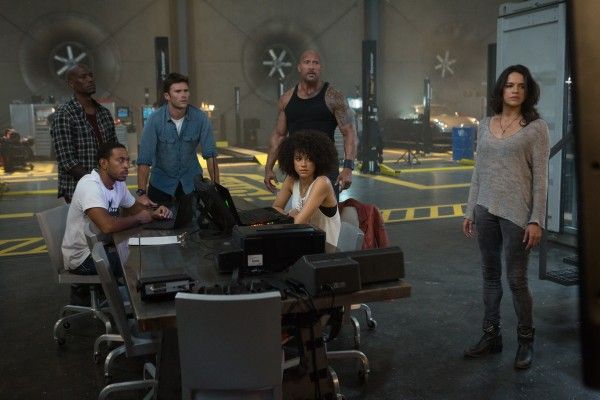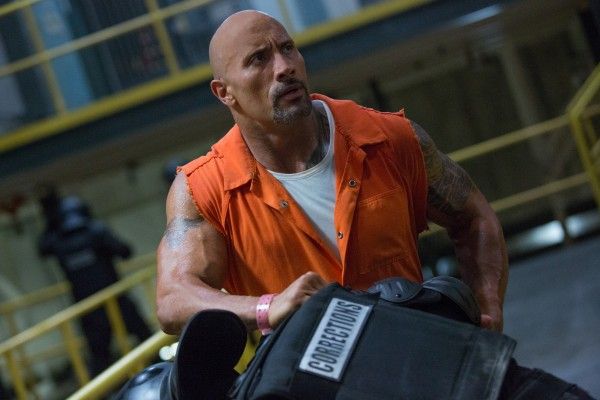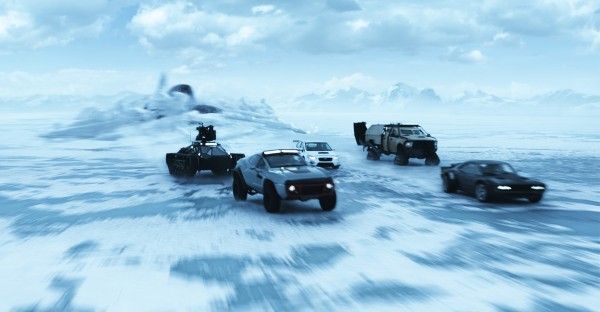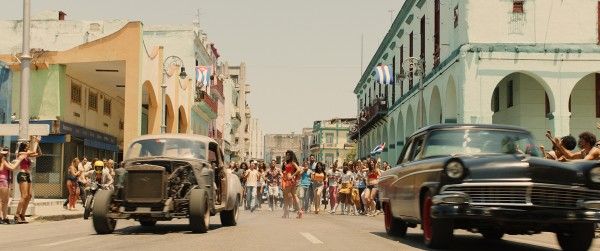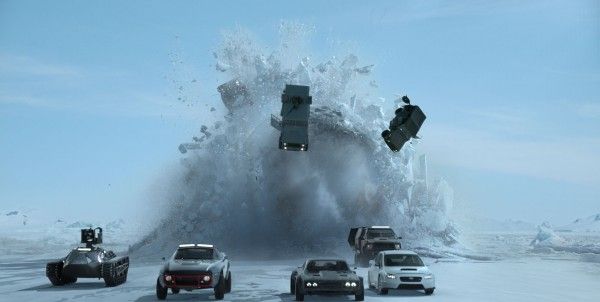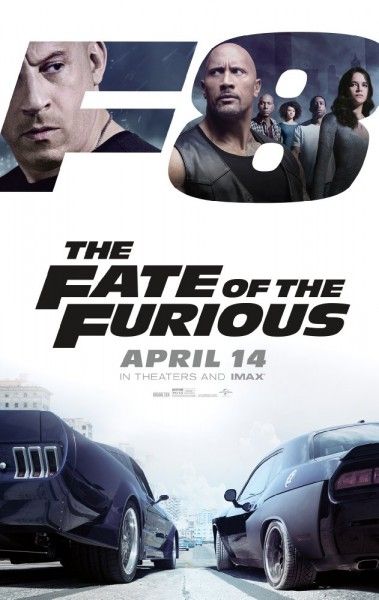Shortly before The Fate of the Furious smashed box office records around the world, I landed an exclusive interview with producer Neal Moritz. If you’re not aware, Moritz has produced every single installment in the franchise under the banner of his production company Original Film. He’s a key component of the films and someone that’s helped shepherd a small movie about people stealing cars to one of the biggest franchises in Hollywood.
During our interview, Moritz talked about when he first realized Fast & Furious could be pivoted into what it has now become, the importance of organic diversity in casting, collaborating with the various directors that have helmed the films, how quickly they start making the next film after finishing the previous one, if they’ve started prepping Fast 9 and 10, the challenges of filming in Cuba, how Vin Diesel is involved in every aspect of the films, and a lot more. Check out what he had to say below.
COLLIDER: Before we talk about The Fate of the Furious, let’s go backwards. When did you first realize that the franchise could be pivoted into what it has now become?
MORITZ: I think the first indication I ever had that it was something more than just a small street culture, car culture movie was after the first test screening in 2001 when I walked out to the parking lot and I just saw kids in their cars going crazy and kids just congregated together just talking each other’s ears out. That’s when we knew we had something a little more special than just your average run-of-the-mill film. But I don’t really think that we knew we had something that was gonna have the longevity of this until after Tokyo Drift. A cameo in Tokyo Drift of Vin [Diesel ]at the end of that movie which helped us propel it into 4 which obviously took us to another level. But I think when we got to 5 then it became a bit more of a big heist movie, big international heist movie, then we realized that we had something that we could probably keep going with.
My favorite in the series is Fast Five. I think that it’s just a huge step forward for the franchise. The action, everything about it, I love. Do you remember testing that movie for the first time and what the reaction was and how it compared to the other films?
MORITZ: It’s interesting, I think ever since...Honestly, all the movies have tested extremely high, probably within 10% of each other in terms of the numbers. But I think when you start to think about the test screenings and you asked people, “What did you like the most?” I think that there’s certain sequences, whether it’s Fast Five and the vault being dragged through the city or in 6 the tank crushing cars, whether it’s 7 and jumping from building to building, or whether it’s now 8 when people can’t stop talking about the whole New York action sequence or the [Jason] Statham fight in the plane. I think that that’s the thing that people kind of talk about in our focus groups, because I think for the most part our scores have been pretty similar. We’ve been lucky enough that this is a movie that people just love the characters, so ultimately that’s what determines the score.
One of the things I love about the Fast and Furious franchise is the diversity of the cast. You’d think more studios would look at what you guys are doing and being, “We need to copy this” but they don’t. Why is that?
MORITZ: I think they’ve tried many, many times. Need for Speed tried it. I think there’s a lot of movies that try it, but I think that the audiences are smart enough to understand that when it feels organic, it feels real, they like that. But when they feel like they’re just being talked down to, “Oh, we’re just gonna put a black guy and a Hispanic guy, a Latino girl…” I think that they see that coming and that’s what they don’t like. I think it has to be organic project and it has to fit the project.
You’ve had a number of different directors on the franchise. Can you talk about collaborating with all of them and how are they different or the same?
MORITZ: I mean, look, we’ve obviously worked with Rob Cohen, John Singleton, Justin Lin, James Wan, F. Gary Gray, and what we’ve encouraged every one of them to do is to make it their own, to really try to make it their own and really put their own style on it and kind of let us help them when it gets outside of what a Fast and Furious movie is. Really that’s what we sort of function as, kind of the sounding board for that. I want each of these guys to push it as far as they can and try to make it as much as their own film and with their own identity and their own style and their own music, really give it their vibe. That’s why we definitely are hiring –Sometimes we go out and say, “Honestly guys, I don’t think that’s a feature in a Fast and Furious film” and luckily we’ve had a very, very collaborative relationship. I remain good friends with all of them. In fact, I’m shooting the S.W.A.T. TV pilot with Justin right now, I’m developing another show with James Wan right now, I’ve been talking to Gary Gray about many different things. So I think we really encourage a collaborative process, we really want them to put their individual stamps on it.
With Furious 7 you guys did the impossible as you made a great movie that also honored Paul Walker. I know the original ending was going to open the world of Fast and Furious a little bit more. I’m sure what ended up on screen is obviously different than what you originally anticipated doing. Can you talk about what you originally had as the ending of Furious 7?
MORITZ: Honestly, I cannot remember what the original ending was, I’d have to go look back. But, unfortunately, Paul’s passing gave us the best ending that any Fast and Furious movie could ever have, because it honored him as a true colleague, and more importantly as a great friend to all of us. We were so torn after the accident about actually going to finish the film, and it wasn’t until Chris Morgan came with the idea of the road at the end splitting that we felt like we could actually make a movie and finish that movie. Up until that point we were really just like, “We’re not gonna finish the movie.” That was truly him just obviously smiling down on us that allowed us to finish that movie and for it to work out the way it did both creatively and commercially. We were just so determined to honor him and his legacy, and if that would’ve been the end of the Fast and Furious franchise, I would’ve been fine with it.
Over the past few years the movies seem to come out every other year. How soon are you working on the next one from when the last one finishes?
MORITZ: There’s other people who are involved who like to think kind of ahead while we’re making each movie. But personally, I’m the one who’s always saying, “Let’s make this one great, and then we’ll think of what we’re gonna do next.” We have some overarching thoughts of what we’re gonna do through the next few films, but we won’t start putting any of it together until Monday when we get through this. We just truly –I know you saw it at CinemaCon, we finished the movie like two days before CinemaCon. We’ve been working until the last minute. This movie didn’t even start shooting less than a year ago, probably like 11 months and 15 days ago we started shooting the movie. So that’s what we’ve been concerned about, we’ve been concerned about making this one great.
People don’t realize what it takes in post-production.
MORITZ: No, not when you have 2800 VFX shots.
After Furious 7 Vin talked about wanting to make three more films and end the franchise after number 10, is that still plan, and how quickly will you be jumping into prepping number 9?
MORITZ: Our plan is to go as quickly as we can under the idea that we gotta have a great story and be ready to go. And, honestly, we have some big themes and things we’re talking about, we’re just not there in terms of where exactly we’re gonna go yet. We kind of have the ending point of the franchise, but we don’t know the in-betweens yet.
So basically, the plan is to make two more movies?
MORITZ: Yeah, the plan is to make two more movies.
You mentioned that you guys came up with the ending point for movie 10, so can I ask if that was a Chris Morgan thing, was that a Vin Diesel thing, was that you guys all in the room together and realizing, “This is where we want it to ultimately end”?
MORITZ: That’s just all of us kind of putting our heads together and coming together with something that we think is very special.
Have you guys ever considered filming the next two back-to-back? Or is making one just enough?
MORITZ: We’ve considered it, but you’ve seen what goes into the making of these movies. It’s just daunting. That would mean we would need to have two scripts finished, which we have enough of a hard time getting one script ready in time. And it would just mean we would end up shooting like 160 days straight, and it’s just too much. I just don’t think we can do it.
Without going into spoilers about the ending of The Fate of the Furious, the ending opens the door to one of the key characters possibly returning as a future antagonist. Do you envision this character being the antagonist of the next two films?
MORITZ: I think the antagonist will figure into the films, I don’t know exactly how yet.
I don’t want to say a pronoun, but it’s possible that this character could be a big antagonist in the future?
MORITZ: Could be.The honest answer is yes. We would love –without saying a pronoun– to be involved in the next couple of films. 100%.
I was just wondering if when that person signed on it was like a multi-picture deal or was it sort of like, “Sign on for this one, see how it goes, and if everyone likes it then come back for another”?
MORITZ: It wasn’t a multi-picture deal, but the intention has always been to continue.
You guys always have the craziest action set pieces, you mentioned earlier in this interview that each movie has stuff that just is incredible. How challenging is it to always top what you’ve previously done and which of the set pieces in this new one was the toughest to put together?
MORITZ: I think Cuba was actually the hardest to put together just because it was uncharted territory, and no major studio film had been shot there in, I don’t know, 50 years, and there was no infrastructure, there wasn’t enough hotel rooms for everybody. We basically barged everything from Florida to Cuba from the toilet paper to the camera. Everything that we needed we brought with us.
That’s crazy.
MORITZ: But it was worth every bit of headache that we had. I think it totally set up what a Fast and Furious film is in terms of the culture, the multi-ethnic abroad, the music, the cars, the sexiness, the escapist voyeuristic aspect, wish fulfillment aspect of a Fast and Furious film.
Do you think that Gary could be back for helming 9 and 10, or are you looking at other directors to possibly helm either or both of those installments?
MORITZ: We had a great experience with Gary and if he wanted to come back we’d love to talk about that. But we haven’t spoken about it at all. When I tell you we were just literally trying to get this movie finished.
One of the things I also love about the franchise is that Hobbs and Dominic at this point could probably take on Captain America and win, they’re preposterously strong. Do you remember when it happened that they just jumped to another level in strength and stamina?
MORITZ: That’s a good question.
It’s like they could get hit by a ladder and just laugh.
MORITZ: I can’t remember if the fight between the two of them was in 5, I think it was in 5. But I think it was in that fight between the two of them there that you realized that the only one that can take on the other was each of them. And it was that fight to the death in 5 where they were being thrown through walls where I think it happened for me.
I know Vin has a very personal connection to this character and this franchise, how much are you working with him to flesh out the story and how much is he involved in every aspect of the franchise?
MORITZ: It’s a total collaborative experience between all of us, and he knows the characters better than anybody. We all work really closely together from pre-production all the way through the end of the movie.
With the last few films you obviously have proven that these are huge productions that can be delivered. I’m just curious how has the relationship with Universal possibly changed, if at all, during the course of the last few films? Is it sort of like they’re watching every little thing or are they sort of trusting you now like, “Hey, we’ve made these for this budget repeatedly. We know what we’re doing. Trust us.”?
MORITZ: They’ve been incredible partners not only during the making of the movie but in the marketing of the movie. And honestly, I never feel an “against them” thing, I just feel like we’re all one team working together. But they do have a tremendous amount of trust with us and luckily through all 8 movies I’m the only person who’s been involved in all 8 movies. They have an incredible amount of trust in me on certain things and when it comes to other things I have an incredible amount of trust in them.

